Showing Spotlights 185 - 192 of 547 in category All (newest first):
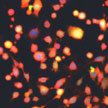 The intravenous iron-replacement product ferumoxytol and other iron oxide nanoparticles are being used for treating iron deficiency, as contrast agents for magnetic resonance imaging, and as drug carriers. In a new study, researchers have shown an intrinsic therapeutic effect of ferumoxytol on the growth of early mammary cancers and lung cancer metastases in liver and lungs. They showed that ferumoxytol can activate the immune system to attack cancer cells. This is the first description of an intrinsic therapeutic effect of iron oxide nanoparticles against cancer.
The intravenous iron-replacement product ferumoxytol and other iron oxide nanoparticles are being used for treating iron deficiency, as contrast agents for magnetic resonance imaging, and as drug carriers. In a new study, researchers have shown an intrinsic therapeutic effect of ferumoxytol on the growth of early mammary cancers and lung cancer metastases in liver and lungs. They showed that ferumoxytol can activate the immune system to attack cancer cells. This is the first description of an intrinsic therapeutic effect of iron oxide nanoparticles against cancer.
Oct 4th, 2016
 Researchers have developed an enteric micromotor consisting of a magnesium-based motor body with an enteric polymer coating. These motors, aimed controlling and enhancing site-specific delivery in the gastrointestinal tract, consist of water-powered magnesium-based tubular micromotors coated with an enteric polymer layer. The microscale robot can deliver payload to particular location via dissolution of their enteric polymeric coating to activate their propulsion at the target site towards localized tissue penetration and retention.
Researchers have developed an enteric micromotor consisting of a magnesium-based motor body with an enteric polymer coating. These motors, aimed controlling and enhancing site-specific delivery in the gastrointestinal tract, consist of water-powered magnesium-based tubular micromotors coated with an enteric polymer layer. The microscale robot can deliver payload to particular location via dissolution of their enteric polymeric coating to activate their propulsion at the target site towards localized tissue penetration and retention.
Sep 27th, 2016
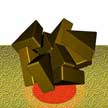 The optical manipulation of plasmonic nanoparticles has advantages for applications such as nanofabrication, drug delivery and biosensing. To that end, researchers have been developing techniques for the reversible assembly of plasmonic nanoparticles that can be used to modulate their structural, electrical and optical properties. The latest such technique is a low-power assembly that is enabled by thermophoretic migration of nanoparticles due to the plasmon-enhanced photothermal effect and the associated enhanced local electric field over a plasmonic substrate.
The optical manipulation of plasmonic nanoparticles has advantages for applications such as nanofabrication, drug delivery and biosensing. To that end, researchers have been developing techniques for the reversible assembly of plasmonic nanoparticles that can be used to modulate their structural, electrical and optical properties. The latest such technique is a low-power assembly that is enabled by thermophoretic migration of nanoparticles due to the plasmon-enhanced photothermal effect and the associated enhanced local electric field over a plasmonic substrate.
Sep 21st, 2016
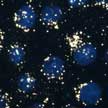 Currently available toxicity screening methods are not fully compatible with nanotoxicity studies. Due to the unique physicochemical characteristics of nanomaterials, conventional cytotoxicity assays have been shown to create complications in nanotoxicity evaluation. In a new study, researchers used surface-enhanced Raman scattering (SERS) to evaluate the cytotoxicity of nanomaterials. They show that SERS can be used as an alternative nanotoxicity evaluation method especially for the nanomaterials that have been shown to create complications in conventional cytotoxicity assays.
Currently available toxicity screening methods are not fully compatible with nanotoxicity studies. Due to the unique physicochemical characteristics of nanomaterials, conventional cytotoxicity assays have been shown to create complications in nanotoxicity evaluation. In a new study, researchers used surface-enhanced Raman scattering (SERS) to evaluate the cytotoxicity of nanomaterials. They show that SERS can be used as an alternative nanotoxicity evaluation method especially for the nanomaterials that have been shown to create complications in conventional cytotoxicity assays.
Sep 20th, 2016
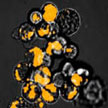 Very recently, the use of zwitterionic coatings has emerged as an alternative strategy to provide corona free nanoparticles. The layers of proteins adsorbed to the surface of a nanomaterial at any given time is known as the protein corona. This protein layer can hinder interactions between the targeting ligands at the surface of nanoparticles and their binding partners on the cells' surface. Researchers found that by using both zwitterionic- and targeting-ligands at the surface of nanoparticles, the shielding effects of protein corona can be reduced.
Very recently, the use of zwitterionic coatings has emerged as an alternative strategy to provide corona free nanoparticles. The layers of proteins adsorbed to the surface of a nanomaterial at any given time is known as the protein corona. This protein layer can hinder interactions between the targeting ligands at the surface of nanoparticles and their binding partners on the cells' surface. Researchers found that by using both zwitterionic- and targeting-ligands at the surface of nanoparticles, the shielding effects of protein corona can be reduced.
Sep 1st, 2016
 Oral cancer represents one of the most dreadful killer diseases globally. Researchers have developed nano-sized layer by layer (LbL) assembled polyelectrolytes onto calcium carbonate particles to deliver small molecule tyrosine kinase inhibitors to human oral cancer cells. Calcium carbonate is a naturally occurring inorganic mineral with a porous structure generates a large surface area. It is biocompatible, biodegradable, acts as a sacrificial core template, and offers the opportunity to capture effectively a myriad molecules of interest like drugs, proteins, enzymes, etc. The researchers encapsulated sorafenib - a tyrosine kinase inhibitor - in CaCO3 nanoparticles, which was layered alternatively with biodegradable polyelectrolytes to form a multilayer shell.
Oral cancer represents one of the most dreadful killer diseases globally. Researchers have developed nano-sized layer by layer (LbL) assembled polyelectrolytes onto calcium carbonate particles to deliver small molecule tyrosine kinase inhibitors to human oral cancer cells. Calcium carbonate is a naturally occurring inorganic mineral with a porous structure generates a large surface area. It is biocompatible, biodegradable, acts as a sacrificial core template, and offers the opportunity to capture effectively a myriad molecules of interest like drugs, proteins, enzymes, etc. The researchers encapsulated sorafenib - a tyrosine kinase inhibitor - in CaCO3 nanoparticles, which was layered alternatively with biodegradable polyelectrolytes to form a multilayer shell.
Jul 27th, 2016
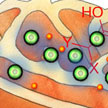 Studies show hat mitochondrial metabolism theoretically is a plausible target for cancer therapy. Mitochondria are the primary controllers of cellular suicide; however, cancer cells trick this normal cellular mechanism and evade this process leading to uncontrolled cellular growth. To trigger the suicide switch back on, new work uses a highly selective nanotechnology-based approach to deliver a widely available small molecule commonly found as a by-product of a water chlorination process.
Studies show hat mitochondrial metabolism theoretically is a plausible target for cancer therapy. Mitochondria are the primary controllers of cellular suicide; however, cancer cells trick this normal cellular mechanism and evade this process leading to uncontrolled cellular growth. To trigger the suicide switch back on, new work uses a highly selective nanotechnology-based approach to deliver a widely available small molecule commonly found as a by-product of a water chlorination process.
Jul 6th, 2016
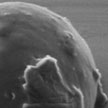 Researchers have demonstrated that the coupling of pristine graphene sheets on practically any polymer surface can be accomplished in mild reaction conditions and in aqueous medium. The method leaves intact the 2D planar structure of graphene preserving its original features. This novel hybrid construct enables in vivo photoacoustic signal enhancement and is a very promising step forward for an implementation of photoacoustic imaging, a powerful preclinical diagnostic tool.
Researchers have demonstrated that the coupling of pristine graphene sheets on practically any polymer surface can be accomplished in mild reaction conditions and in aqueous medium. The method leaves intact the 2D planar structure of graphene preserving its original features. This novel hybrid construct enables in vivo photoacoustic signal enhancement and is a very promising step forward for an implementation of photoacoustic imaging, a powerful preclinical diagnostic tool.
Jun 30th, 2016
 The intravenous iron-replacement product ferumoxytol and other iron oxide nanoparticles are being used for treating iron deficiency, as contrast agents for magnetic resonance imaging, and as drug carriers. In a new study, researchers have shown an intrinsic therapeutic effect of ferumoxytol on the growth of early mammary cancers and lung cancer metastases in liver and lungs. They showed that ferumoxytol can activate the immune system to attack cancer cells. This is the first description of an intrinsic therapeutic effect of iron oxide nanoparticles against cancer.
The intravenous iron-replacement product ferumoxytol and other iron oxide nanoparticles are being used for treating iron deficiency, as contrast agents for magnetic resonance imaging, and as drug carriers. In a new study, researchers have shown an intrinsic therapeutic effect of ferumoxytol on the growth of early mammary cancers and lung cancer metastases in liver and lungs. They showed that ferumoxytol can activate the immune system to attack cancer cells. This is the first description of an intrinsic therapeutic effect of iron oxide nanoparticles against cancer.
 Subscribe to our Nanotechnology Spotlight feed
Subscribe to our Nanotechnology Spotlight feed





